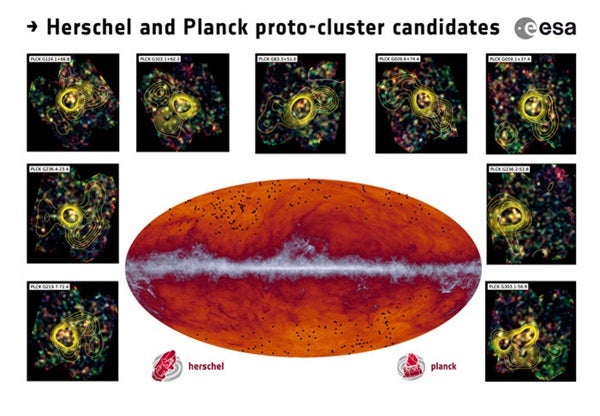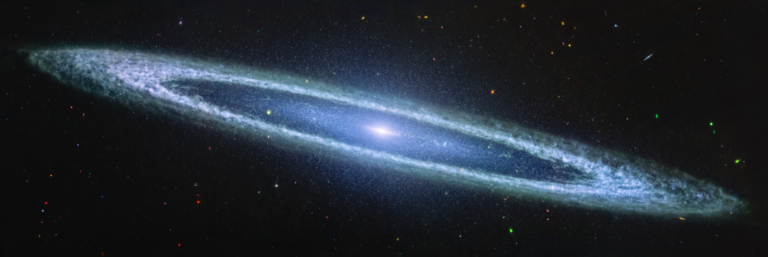Galaxies like our Milky Way with its 100 billion stars are usually not found in isolation. In the universe today, 13.8 billion years after the Big Bang, many are in dense clusters of tens, hundreds, or even thousands of galaxies.
However, these clusters have not always existed, and a key question in modern cosmology is how such massive structures assembled in the early universe.
Pinpointing when and how they formed should provide insight into the process of galaxy cluster evolution, including the role played by dark matter in shaping these cosmic metropolises.
Now, using the combined strengths of Herschel and Planck, astronomers have found objects in the distant universe seen at a time when it was only 3 billion years old that could be precursors of the clusters seen around us today.
Planck’s main goal was to provide the most precise map of the relic radiation of the Big Bang, the cosmic microwave background. To do so, it surveyed the entire sky in nine different wavelengths from the far-infrared to radio in order to eliminate foreground emission from our galaxy and others in the universe.
But those foreground sources can be important in other fields of astronomy, and it was in Planck’s short-wavelength data that scientists were able to identify 234 bright sources with characteristics that suggested they were located in the distant early universe.
Herschel then observed these objects across the far-infrared to submillimeter wavelength range but with much higher sensitivity and angular resolution.
Herschel revealed that the vast majority of the Planck-detected sources are consistent with dense concentrations of galaxies in the early universe, vigorously forming new stars.
Each of these young galaxies is seen to be converting gas and dust into stars at a rate of a few hundred to 1,500 times the mass of our Sun per year. By comparison, our Milky Way Galaxy today is producing stars at an average rate of just one solar mass per year.
While the astronomers have not yet conclusively established the ages and luminosities of many of these newly discovered distant galaxy concentrations, they are the best candidates yet found for “protoclusters” — precursors of the large mature galaxy clusters we see in the universe today.
“Hints of these kinds of objects had been found earlier in data from Herschel and other telescopes, but the all-sky capability of Planck revealed many more candidates for us to study,” said Hervé Dole of the Institut d’Astrophysique Spatiale, Orsay.
“We still have a lot to learn about this new population, requiring further follow-up studies with other observatories. But we believe that they are a missing piece of cosmological structure formation.”
“We are now preparing an extended catalog of possible protoclusters detected by Planck, which should help us identify even more of these objects,” said Ludovic Montier from the Institut de Recherche en Astrophysique et Planétologie, Toulouse.
“This exciting result was possible thanks to the synergy between Herschel and Planck: rare objects could be identified from the Planck data covering the entire sky, and then Herschel was able to scrutinize them in finer detail,” said Göran Pilbratt from ESA.
“Both space observatories completed their science observations in 2013, but their rich datasets will be exploited for plentiful new insights about the cosmos for years to come.”










